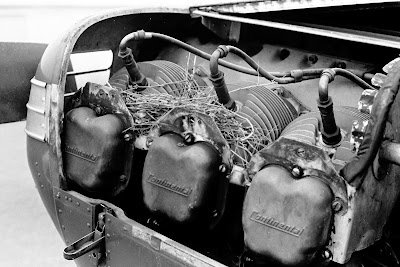Do you lean your engine for taxi? (must be stupid and not too bright!)
Is that technique in your POH?
Remember Swiss Air 111.....followed the check list RELIGIOUSLY....and they all died. It is an scenario regularly flown in the SIM at FlightSafety. It is thought that if they had tossed their checklist and made an emergency descent (they were on fire!) that they would have had a chance to live.
Flying depends on brains as well as your method, rote.
For aircraft with a mix control ad for which it is called out yes I do to avoid fouling which I have experienced when I missed it in a checklist flow (only human).
In the Yak I don't because there is no mix control (pressure compensating carb) - put simply, I follow the designer/manufacturer's recommendations in every aircraft I fly, which is over 40 different make/models over the last nearly 30 years.
As a recovering Technical Writer I know first-hand the thought, research and internal/external review and approval effort that goes into the development and certification of AFM/POH data (FCOM for heavy iron), and as a current Reliability/Maintainability/Safety professional, in aerospace, I know what happens when pilots don't follow the recommended procedure.
The Emergency, Abnormal and Normal operating procedures (for a certified aircraft) are FAA Approved data (for most planes, older planes have slightly different cert basis), they are part of the Type Certificate Data Sheet and are there for a reason. Airlines have mechanisms in place that allow them to develop, certify and train to their own standards but that is a significant engineering and operations activity, not some pilot sitting around the airport deciding he knows better than Beech or Piper or Cessna, etc.
AS PIC I always retain the right to deviate as needed, and I will (and have) when necessary but I would never presume to think I knew better than the hundreds of engineers and other professionals who are responsible for the design and certification of the aircraft I fly.
SwissAir 111 is a bad choice, they were less than 30 minutes from the coast and did not have a FIRE indication, only odor then smoke. Regardless, it was 20 minutes from first indication (still over the Atlantic Ocean) to loss of the aircraft (offshore). They followed the checklist, caged the cabin electrics and diverted to Halifax ASAP but it was still not close enough given the nature, seriousness and location of the fire. That plane was lost the moment the odor was detected. They were never going to get the ten additional minutes they needed.
Now you or Henning or anyone else for that matter don't have to do it how I do, but don't expect me to fly with you if I know or observe that you don't follow procedure.
'Gimp







